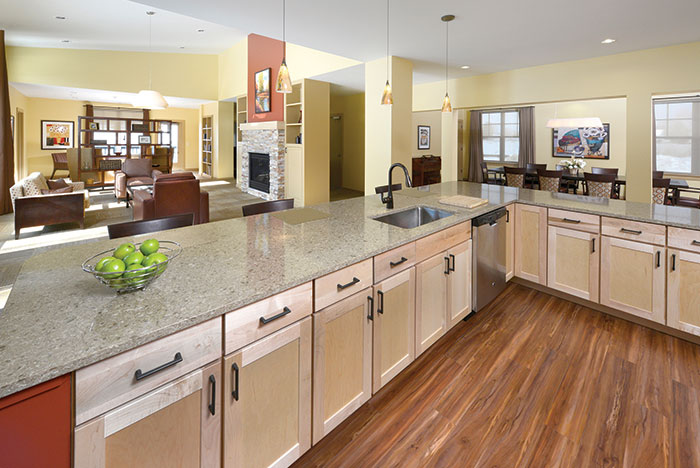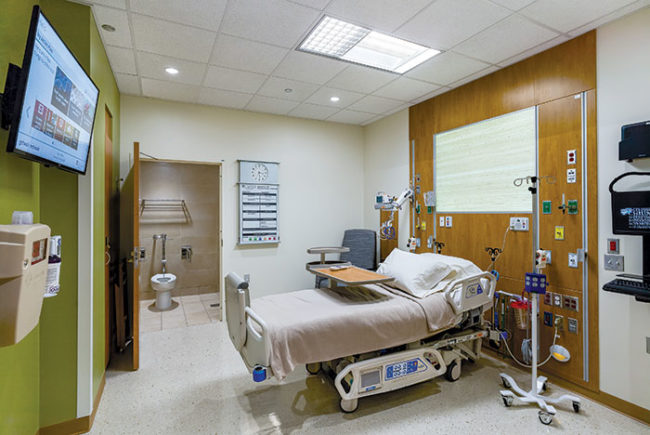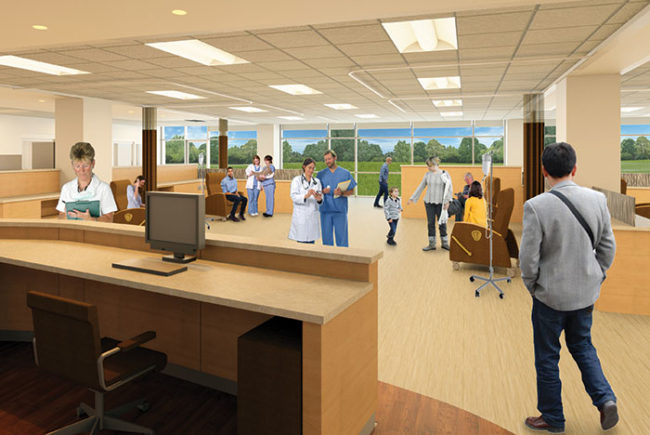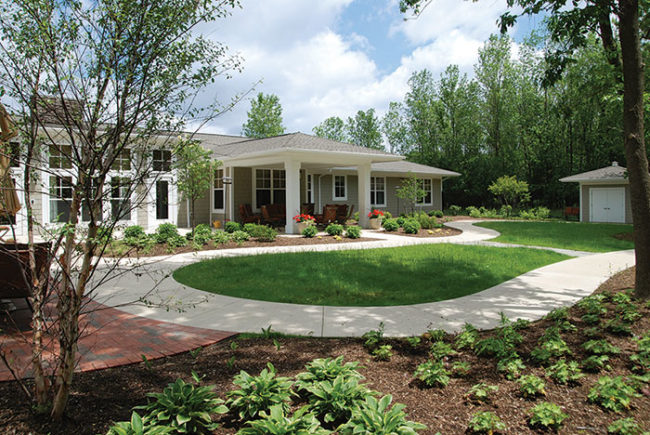
Marian’s House has a large, open kitchen and eating area as well as a great room for activities and specialized programming.
The best practices for designing for persons with dementia not only can be applied to residential buildings, but also to other settings that deliver care and programming for seniors. For instance, they were successfully applied at Marian’s House, Rochester, N.Y.
Also in this article |
| Designing for memory care |
|
|
Developed by Jewish Senior Life to support caregivers and provide social and engaged activities for those with dementia still residing at home, the idea behind Marian's House was to provide a place for at-home caregivers, who may be adult children or a spouse, to bring their loved ones with dementia for a short period of time.
Marian’s House provides adult day and overnight respite care for people with early- to mid-stage dementia in a warm, residential-looking facility. The house is specially designed for both one-on-one interactions and group activities.
It has a large, open kitchen and eating area; great room for activities and specialized programming; dining room for shared meals or caregiver support meetings; den for a soothing, calm environment; screened porch overlooking the public street and front yard; fenced-in garden for safe outdoor access; two guest bedrooms for respite stays; and an apartment suite for a 24-hour, on-site caregiver.
In partnership with the Alzheimer’s Association and other senior care agencies, Marian’s House is also a neighborhood resource center that provides training, education and support for family caregivers.





